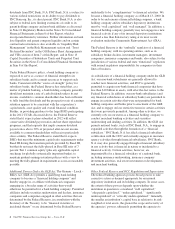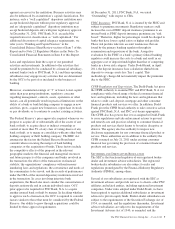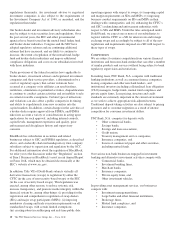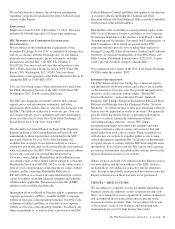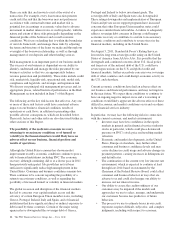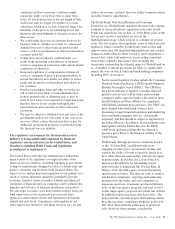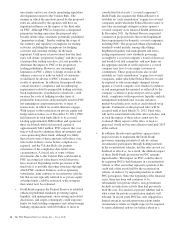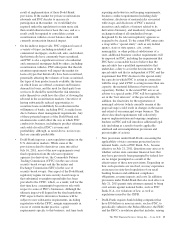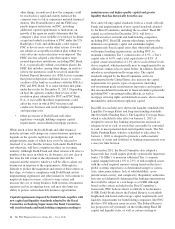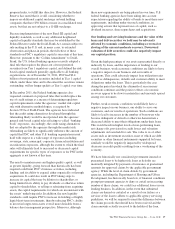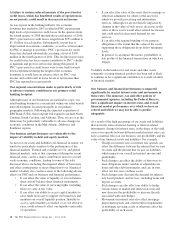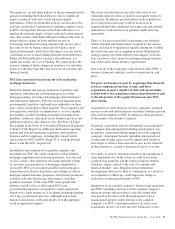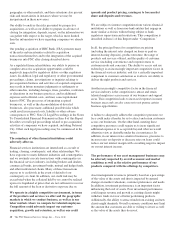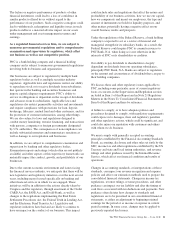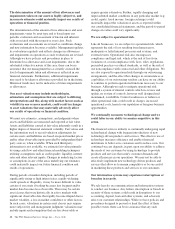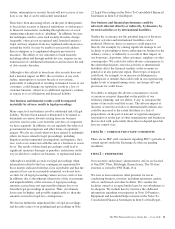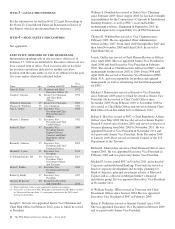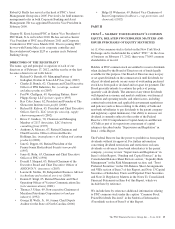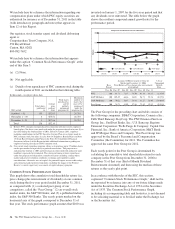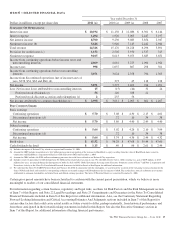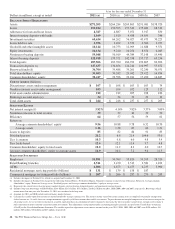PNC Bank 2011 Annual Report Download - page 27
Download and view the complete annual report
Please find page 27 of the 2011 PNC Bank annual report below. You can navigate through the pages in the report by either clicking on the pages listed below, or by using the keyword search tool below to find specific information within the annual report.A failure to sustain reduced amounts of the provision for
credit losses, which has benefitted results of operations in
recent periods, could result in decreases in net income.
As was typical in the banking industry, the economic
downturn that started in 2007 resulted in PNC experiencing
high levels of provision for credit losses. In the quarters from
the fourth quarter of 2008 through the second quarter of 2010,
PNC’s provision for credit losses ranged from $751 million to
$1.1 billion in each quarter. Subsequently, in part due to
improvement in economic conditions, as well as actions taken
by PNC to manage its portfolio, PNC’s provision for credit
losses has declined substantially, reaching a level of $190
million in the fourth quarter of 2011. This decline in provision
for credit losses has been a major contributor to PNC’s ability
to maintain and grow its net income during this period. If
PNC’s provision for credit losses were to rise back towards
levels experienced during the height of the economic
downturn, it would have an adverse effect on PNC’s net
income and could result in lower levels of net income than
PNC has reported in recent periods.
Our regional concentrations make us particularly at risk
to adverse economic conditions in our primary retail
banking footprint.
Although many of our businesses are national in scope, our
retail banking business is concentrated within our retail branch
network footprint, located principally in our primary
geographic markets. Following the expected acquisition of
RBC Bank (USA), this footprint will expand to include North
Carolina, South Carolina, and Alabama. Thus, we are or in the
future may be particularly vulnerable to adverse changes in
economic conditions in the Mid-Atlantic, Midwest, and
Southeast regions.
Our business and performance are vulnerable to the
impact of volatility in debt and equity markets.
As most of our assets and liabilities are financial in nature, we
tend to be particularly sensitive to the performance of the
financial markets. Turmoil and volatility in U.S. and global
financial markets, such as that experienced during the recent
financial crisis, can be a major contributory factor to overall
weak economic conditions, leading to some of the risks
discussed above, including the impaired ability of borrowers
and other counterparties to meet obligations to us. Financial
market volatility also can have some of the following adverse
effects on PNC and our business and financial performance:
• It can affect the value or liquidity of our on-balance
sheet and off-balance sheet financial instruments.
• It can affect the value of servicing rights, including
those we carry at fair value.
• It can affect our ability to access capital markets to
raise funds necessary to support our businesses and
maintain our overall liquidity position. Inability to
access capital markets as needed, or at cost effective
rates, could adversely affect our liquidity and results
of operations.
• It can affect the value of the assets that we manage or
otherwise administer for others or the assets for
which we provide processing and information
services. Although we are not directly impacted by
changes in the value of such assets, decreases in the
value of those assets would affect related fee income
and could result in decreased demand for our
services.
• It can affect the required funding of our pension
obligations to the extent that the value of the assets
supporting those obligations drops below minimum
levels.
• In general, it can impact the nature, profitability or
risk profile of the financial transactions in which we
engage.
Volatility in the markets for real estate and other assets
commonly securing financial products has been and is likely
to continue to be a significant contributor to overall volatility
in financial markets.
Our business and financial performance is impacted
significantly by market interest rates and movements in
those rates. The monetary, tax and other policies of
governmental agencies, including the Federal Reserve,
have a significant impact on interest rates and overall
financial market performance over which we have no
control and which we may not be able to predict
adequately.
As a result of the high percentage of our assets and liabilities
that are in the form of interest-bearing or interest-related
instruments, changes in interest rates, in the shape of the yield
curve or in spreads between different market interest rates can
have a material effect on our business, our profitability and the
value of our financial assets and liabilities. For example:
• Changes in interest rates or interest rate spreads can
affect the difference between the interest that we earn
on assets and the interest that we pay on liabilities,
which impacts our overall net interest income and
profitability.
• Such changes can affect the ability of borrowers to
meet obligations under variable or adjustable rate
loans and other debt instruments, and can, in turn,
affect our loss rates on those assets.
• Such changes may decrease the demand for interest
rate based products and services, including loans and
deposit accounts.
• Such changes can also affect our ability to hedge
various forms of market and interest rate risk and
may decrease the profitability or increase the risk
associated with such hedges.
• Movements in interest rates also affect mortgage
prepayment speeds and could result in impairments
of mortgage servicing assets or otherwise affect the
profitability of such assets.
18 The PNC Financial Services Group, Inc. – Form 10-K


